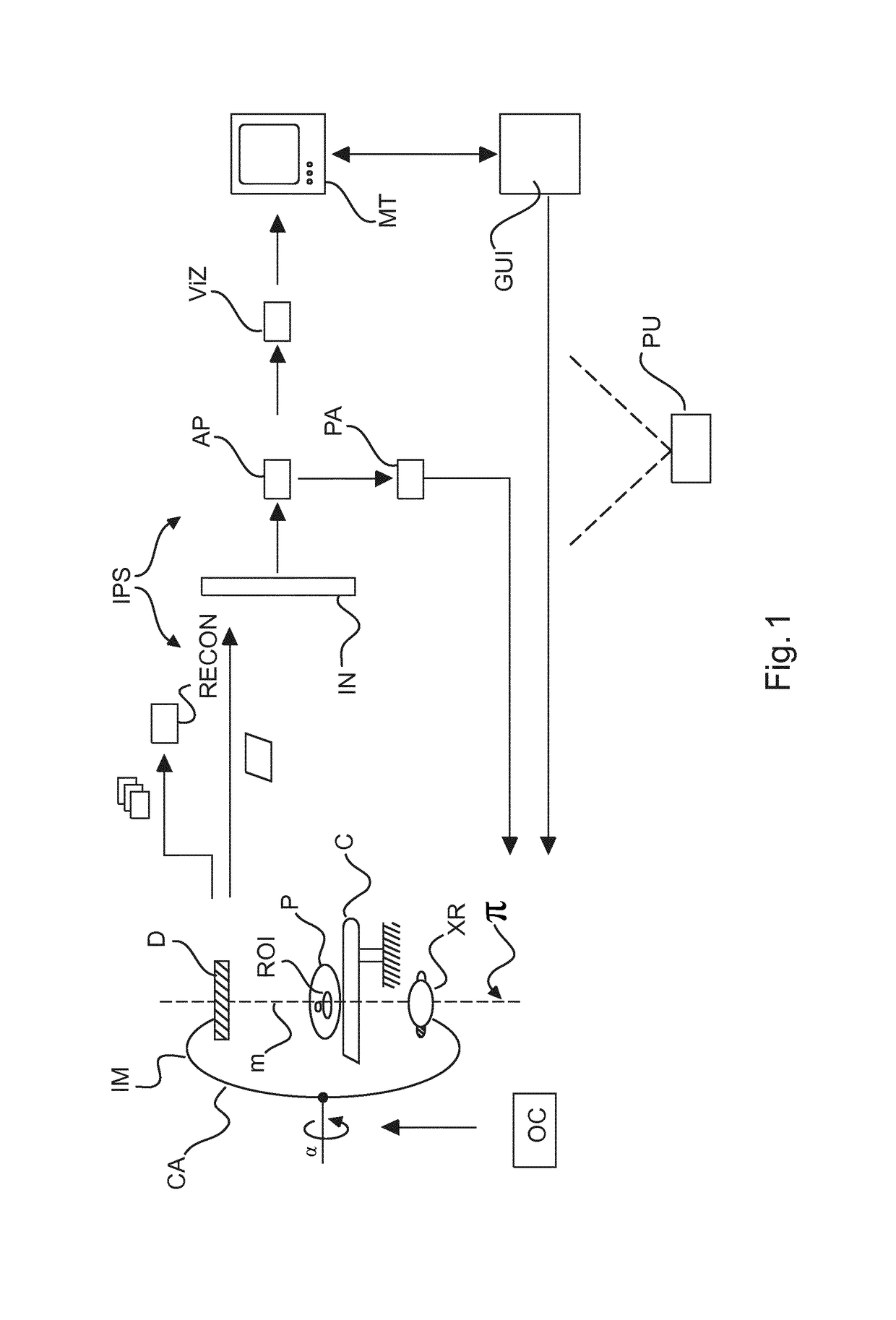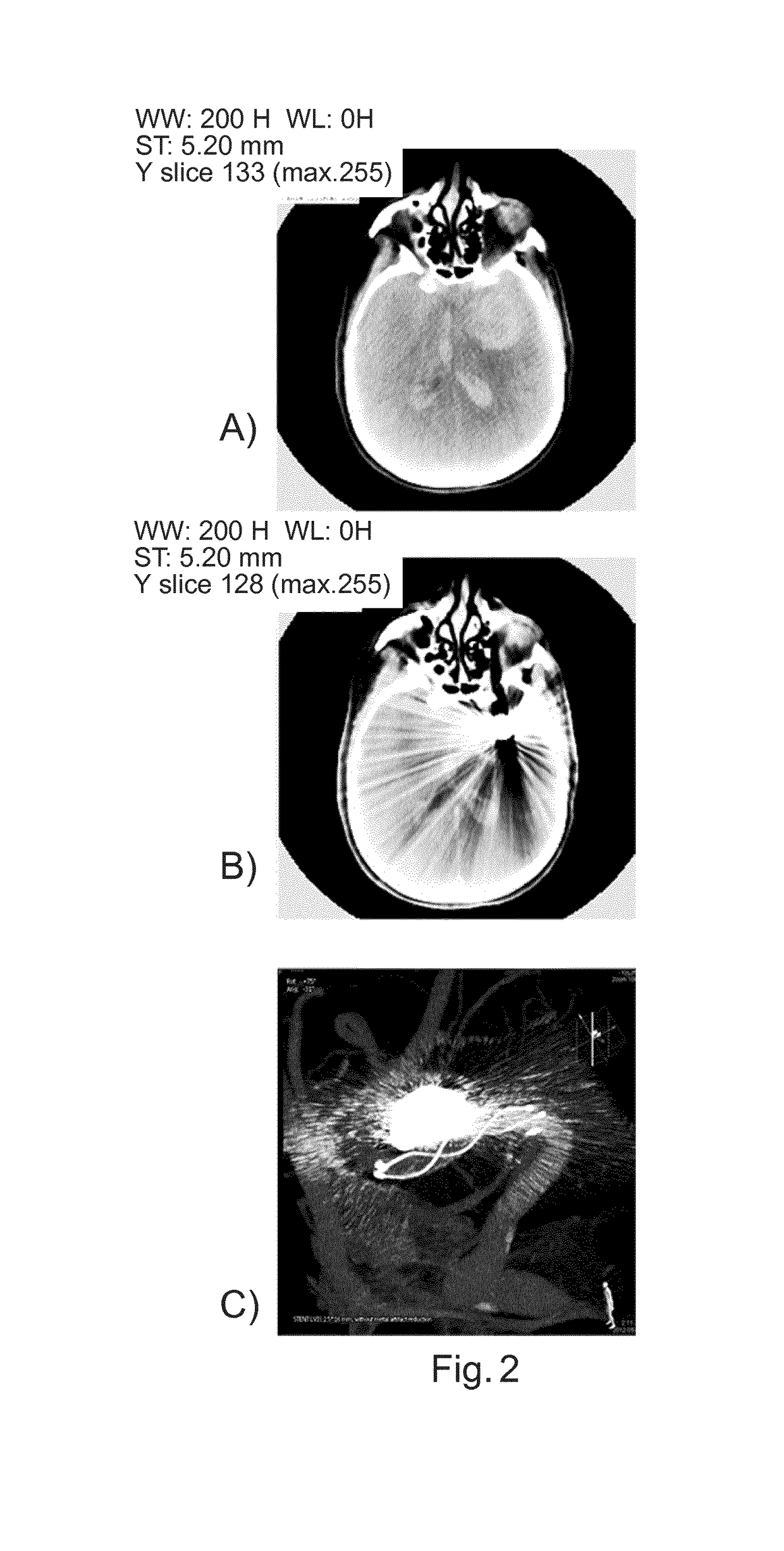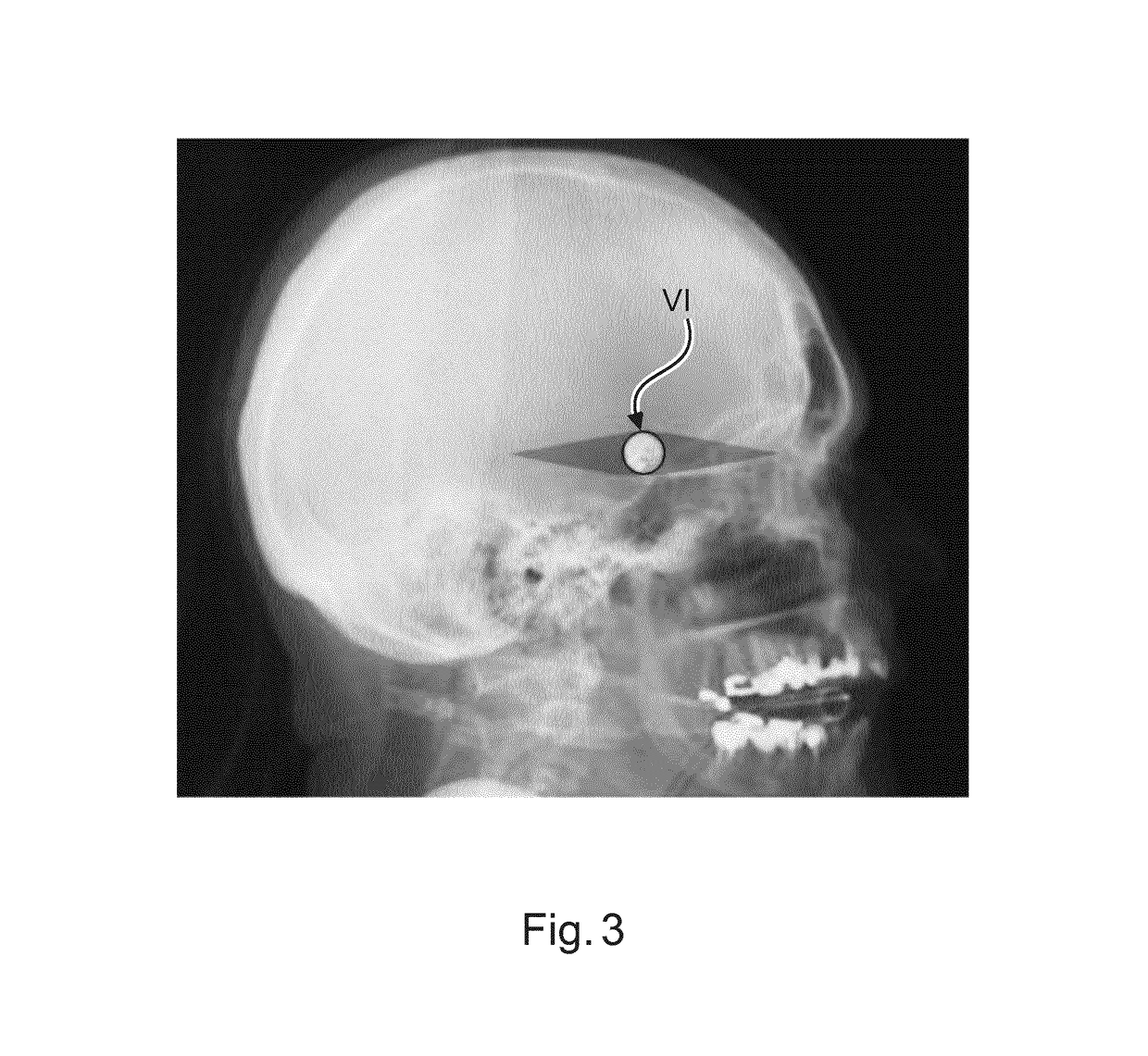Streak artifact prediction
a technology of artifact prediction and streak, which is applied in the field of image processing system, can solve the problems of obscuring clinically relevant information and obscuring clinically relevant details, and achieve the effect of any collision
- Summary
- Abstract
- Description
- Claims
- Application Information
AI Technical Summary
Benefits of technology
Problems solved by technology
Method used
Image
Examples
Embodiment Construction
[0033]With reference to FIG. 1, there is shown a schematic block diagram of an imaging arrangement including an imaging apparatus IM and an image processing system IPS.
[0034]More particularly, the left part of the Figure shows a rotational imaging apparatus IM such as a C-arm system or alternatively a CT scanner. The right part of FIG. 1 shows modules and related circuitry of the image processing system IPS. The image processing system IPS allows manual or automatic operation of the imaging apparatus IM so as to reduce effects of streak artifacts in imagery reconstructed from projection data acquired by the imaging apparatus IM.
[0035]Turning now first to a brief description of the imaging apparatus IM, this includes an X-ray source XR and a detector D. Being a rotational X-ray system, it is at least the X-ray source XR that is rotatable in a trajectory around an imaging region. The (rotation) plane of the trajectory is shown in FIG. 1 as a dashed line as said plane is understood to ...
PUM
 Login to View More
Login to View More Abstract
Description
Claims
Application Information
 Login to View More
Login to View More - R&D
- Intellectual Property
- Life Sciences
- Materials
- Tech Scout
- Unparalleled Data Quality
- Higher Quality Content
- 60% Fewer Hallucinations
Browse by: Latest US Patents, China's latest patents, Technical Efficacy Thesaurus, Application Domain, Technology Topic, Popular Technical Reports.
© 2025 PatSnap. All rights reserved.Legal|Privacy policy|Modern Slavery Act Transparency Statement|Sitemap|About US| Contact US: help@patsnap.com



